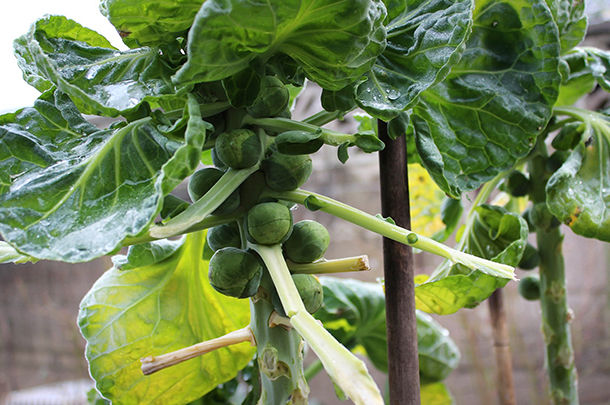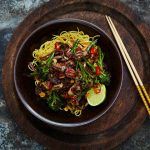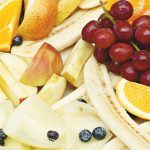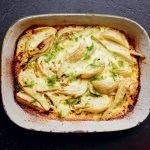Brussels sprouts, like dogs, are not just for Christmas. I find just one outing a year to be nowhere near enough - far more so, in fact, than I do with turkey, which I feel I would eat more often if it were all that wonderful.
There are many sceptics out there, but I believe they simply haven’t met the right sprout yet. The fact that I grow them means I get to start picking when they’re still young, sweet and nutty following a bit of frost.
The main thing is to ignore tradition and cook them lightly, rather than boiling them to a sulphurous mush. Try them with combinations of bacon, blue cheese, cream and chestnuts or with soy, ginger and chilli before writing them off. They flash-fry, sauté and roast well too, pairing particularly well with nut oils and bacon fat (the flavour combination in this super-quick Brussels recipe is particularly magnificent).
They also make fantastic leftovers. I committed heresy this Burn’s Night by serving sprouts alongside the neeps and tatties because they – and haggis – make such fine bubble and squeak the next day. Come to think of it, I have haggis more than once a year as well.
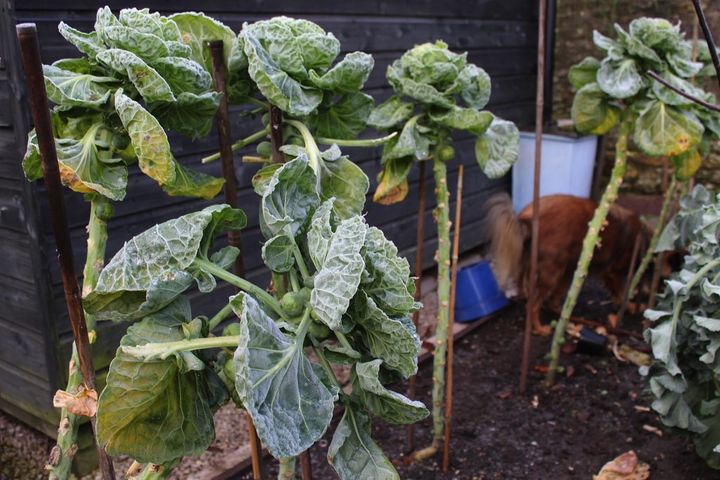
The plant itself is a handsome brassica, standing tall and straight. Sprouts are produced the length of the stem in a helical arrangement, each tightly folded bud resembling a perfect cabbage in miniature. It is crowned by a whorl of leaves that form a loose head. These tops make excellent winter or spring greens – it’s not uncommon for a food crop to have secondary edible parts. These rarely make into the shops but as a home grower you have the opportunity to make use of every possible bit.
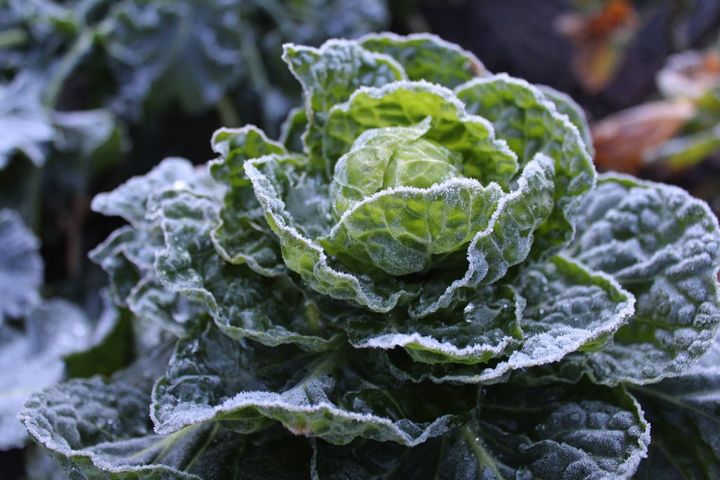
If plants are not staked and earthed up they can rock in the wind and their sprouts may end up blown (loose-leaved), but even then they are perfectly edible. By being canny with varieties and sowing times, the true enthusiast can harvest sprouts from September till March, though that’s probably a bridge too far.
As far as a recipe for using up a glut of sprouts goes, however, I’m reminded of a Zen cookbook I once read. Published in California around 1970, the recipes were remarkably laid-back and unprescriptive, even for that time and place. Half-remembered sample text: ‘chop the beans or not; it doesn’t really matter. Add salt or not; it’s up to you’. Quantities were largely as absent as definite instructions.
If you like your recipes like mathematical formulae, you’ll find the following one equally woolly and irritating but in my defence, the random nature of allotment produce often means that learning to busk it in the kitchen is essential. Appropriately enough, this month’s focus is on soups, and this is how I usually use up the last sprouts, along with their tops.
Brussels sprout and chestnut soup
Brown an onion in butter. Add two or three big handfuls of sliced sprouts and chopped tops. Fry for a bit if you like or simply add stock (vegetable or chicken) straight away. Boil till soft but not to death. Add a couple of heaped dessert spoons of chestnut purée and then liquidise. At this point I like to drop in all the tiny immature sprouts from the top of the stem for a bit of texture (sproûtons, if you will). Simmer for a couple more minutes and season with salt and pepper. Serve with a generous swirl of double cream, drop in some chopped chestnuts (the cooked, vacuum-packed sort) and garnish with finely chopped parsley.
If you don’t have cream, chunks of blue cheese are nice, and if you fancy a meatier version, start by frying smoked lardons, setting them aside to add at the end, and frying everything up in bacon fat rather than butter.
